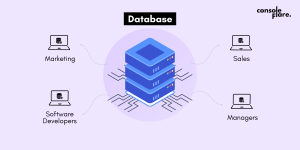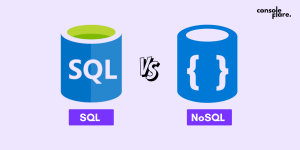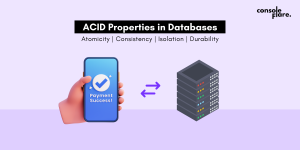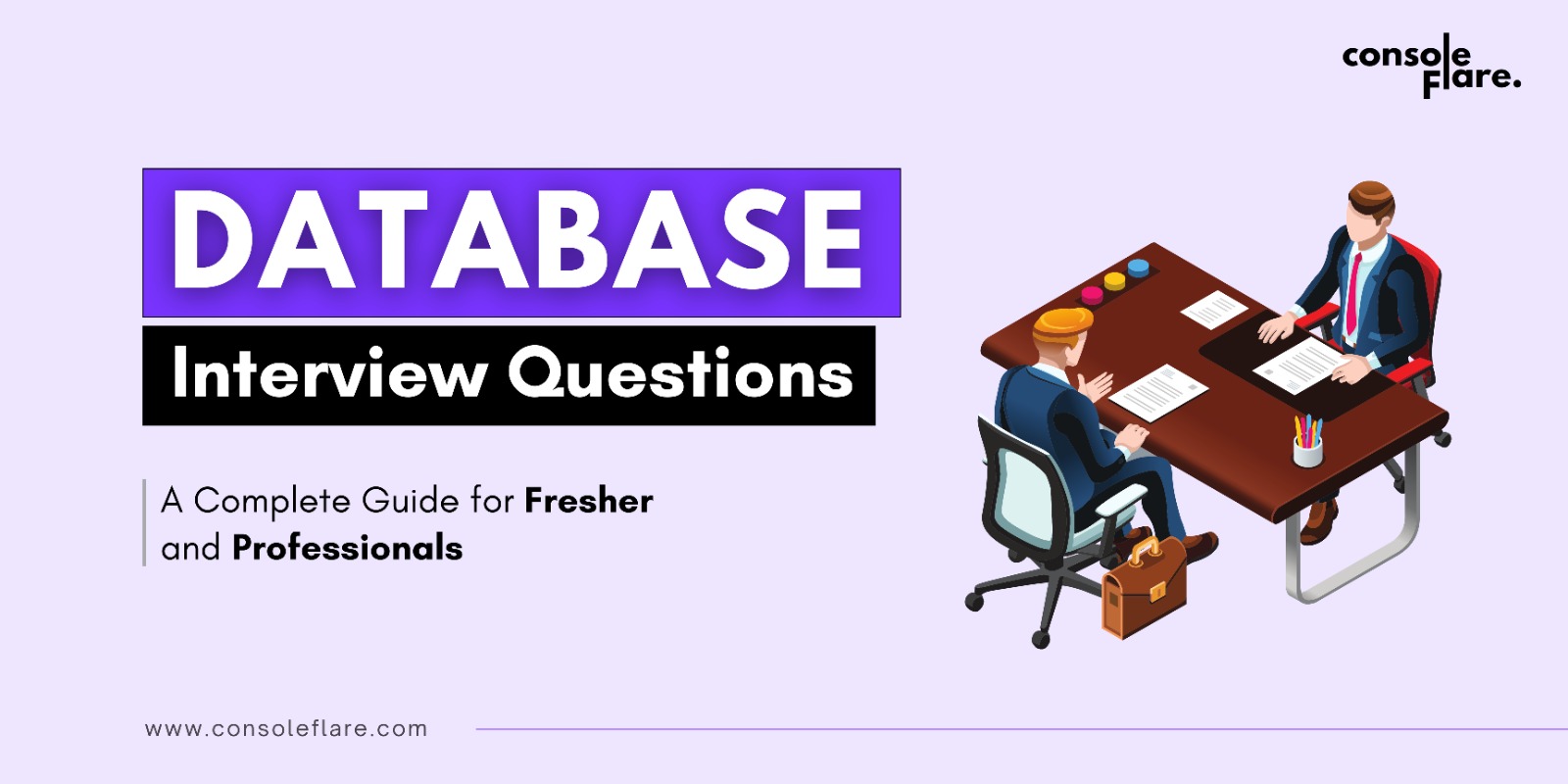Databases are the backbone of today’s digital landscape. Whether you’re a recent graduate aiming to step into tech or a seasoned professional planning a career pivot, understanding database fundamentals is non-negotiable. This all-in-one guide walks you through critical concepts and potential interview questions you’ll likely encounter in 2025 and beyond. We’ve tailored each section to be simple, insightful, and practice-ready.
Common Database Interview Questions with Answers 2025
Q1. What is a database, and why does it matter?
Answer: A database is a structured system that organizes, stores, and manages data efficiently. It’s vital because it enables secure, organized data access and manipulation, helping organizations make informed decisions and operate smoothly.

Q2. How are DBMS and RDBMS different?
Answer: A DBMS (Database Management System) handles the storage and retrieval of data. An RDBMS (Relational Database Management System), on the other hand, organizes data in tables and supports SQL queries while maintaining relationships and enforcing data integrity between tables.
Q3. What purpose does a primary key serve?
Answer: A primary key distinctly identifies every record in a table, making certain that no entry is duplicated or left empty.
Q4. Who are the typical users of a database system?
Answer: There are 4 typical users of a database system as mentioned below:-
- General Users: They use the database to view or update data.
- Software Developers: They build tools and apps that connect to databases.
- Database Managers (DBAs): They oversee database security, optimization and maintenance.
- Business Systems Analysts: They design, assess, and improve database structures.
Core Concepts of Relational Databases
Relational databases use structured tables made up of rows and columns, where data is linked through defined relationships. SQL is a specialized language used for querying, updating, and organizing data stored in relational databases.
Key Attributes:
- Tables store data in a clear and organized format.
- Relationships between tables are enforced through keys.
- ACID principles guarantee that all database transactions are secure, consistent, and error-resistant.
Core Concepts of Relational Databases Questions and Answers 2025
Q1. Define a foreign key.
Answer: A foreign key is a field in one table that connects to the primary key in another, establishing a relational link.
Q2. How does INNER JOIN differ from LEFT JOIN?
Answer: INNER JOIN displays only the rows that have matching data in both tables, while LEFT JOIN includes all records from the left table, pairing them with matching rows on the right or NULL if there’s no match.
Q3. How do constraints function in a relational database?
Answer: Constraints are validation rules for data entry. Examples include like PRIMARY KEY, FOREIGN KEY, NOT NULL, UNIQUE, and CHECK that help maintain valid and consistent data across tables.
Q4. Why is normalization important?
Answer: Normalization structures data to avoid duplication and maintain consistency by breaking it into related tables and defining relationships.
SQL vs NoSQL Databases
SQL (Structured Query Language) databases are relational and schema-based, whereas NoSQL databases are designed to handle unstructured or semi-structured data and scale easily.

SQL Databases:
- Use predefined schemas.
- Best suited for handling structured datasets and executing sophisticated queries.
- Examples: PostgreSQL, MySQL.
NoSQL Databases:
- Use dynamic schemas (JSON, key value, document, etc.)
- Best for high volume, unstructured data.
- Examples: MongoDB, Cassandra, Redis.
NoSQL and SQL Interview Questions and Answers 2025:
Q1. When should a business choose NoSQL over SQL?
Answer: NoSQL is best when dealing with big data, horizontal scaling, or real-time applications such as e-commerce, social networks, and IoT.
Q2. Name some widely used NoSQL databases.
Answer: Common NoSQL solutions include MongoDB (document), Cassandra (column), Redis (key-value), and Neo4j (graph).
Q3. How are relationships handled in NoSQL?
Answer: NoSQL systems typically use embedded documents or application level logic to simulate relationships instead of joins.
Q4. Do NoSQL databases support ACID compliance?
Answer: Certain NoSQL platforms offer limited or complete support for ACID properties, such as MongoDB’s multi document transaction support in newer versions.
Database Normalization Techniques
Normalization helps to streamline data by eliminating redundancy and enhancing consistency.
Common Normal Forms:
- 1NF: Guarantees that every column contains atomic, single-valued data, removing any repeated groups or sets.
- 2NF: Ensures all non-key fields are entirely dependent on the full primary key.
- 3NF: Removes indirect relationships (transitive dependencies) from non key columns.
Database Normalization Techniques Questions and Answers
Q1. What happens if a database isn’t normalized?
Answer: Lack of normalization can lead to data duplication, update anomalies and inefficient queries.
Q2. What is a functional dependency?
Answer: It’s a relationship where one column’s value determines another’s. Understanding this helps in organizing and validating data.
Q3. How is BCNF different from 3NF?
Answer: BCNF(Boyce Codd Normal Form) is a stricter version of 3NF. In BCNF, every non-trivial dependency must be on a candidate key.
Q4. When is normalization not ideal?
Answer: In reporting and data warehouse systems, denormalization is often preferred to improve performance and simplify queries.
ACID Properties in Databases
ACID properties define the reliability and behavior of database transactions:

- Atomicity: Ensures that a transaction is carried out entirely or not initiated at all—there’s no in between.
- Consistency: Ensures that each transaction preserves the database’s integrity by keeping it in a valid state before and after execution.
- Isolation: Ensures that concurrent transactions don’t impact each other’s outcomes.
- Durability: Saves changes permanently, even during crashes or failures.
ACID Properties in Databases Questions and Answers 2025
Q1. Why are ACID rules essential for banking systems?
Answer: Banking applications demand precision. ACID ensures that deposits, withdrawals and transfers are handled securely and without data corruption.
Q2. What’s a dirty read in transactions?
Answer: It’s when a transaction reads data written by another ongoing transaction, possibly leading to inconsistencies.
Q3. How do you manage isolation in SQL?
Answer: SQL offers levels like READ COMMITTED, REPEATABLE READ and SERIALIZABLE to regulate how transactions see data.
Q4. What does a rollback operation do?
Answer: A rollback cancels all actions in a transaction due to failure, protecting data accuracy and state.
Database Indexing and Performance
Indexes enhance performance by enabling quicker access to the requested data, minimizing the need to scan entire tables.
Index Types:
- Single-column index: Indexing one specific field.
- Composite index: Built across multiple columns.
- Unique index: Guarantees all values are different within the indexed field.
Also Read: SQL vs NoSQL: Choosing The Right Database for Your Project
Database Indexing and Performance Questions and Answers 2025
Q1. How does an index improve performance?
Answer: Indexes reduce the time needed to locate data, especially in large tables, by avoiding full table scans.
Q2. Clustered vs Non-clustered index—what’s the difference?
Answer: A clustered index sorts the actual data rows based on the indexed field. A non-clustered index creates a separate lookup structure pointing to the data.
Q3. Can too many indexes affect performance?
Answer: Yes, adding too many indexes can negatively affect performance during data updates and consume extra storage space.
Q4. What factors help determine which columns should be indexed?
Answer: Columns frequently used in search filters, joins or ordering operations are prime candidates for indexing.
Conclusion
Regardless of your experience level, mastering database principles is crucial for acing interviews and succeeding on the job. Beginners should prioritize understanding basics like keys, joins and normalization. Meanwhile, experienced professionals should focus on advanced areas such as indexing strategies, NoSQL design, and transaction control.
At ConsoleFlare, we break down database concepts with real world examples and job focused training. Join our community and gain the confidence to crack your next database interview with ease.
For more such content and regular updates, follow us on Facebook, Instagram, LinkedIn





